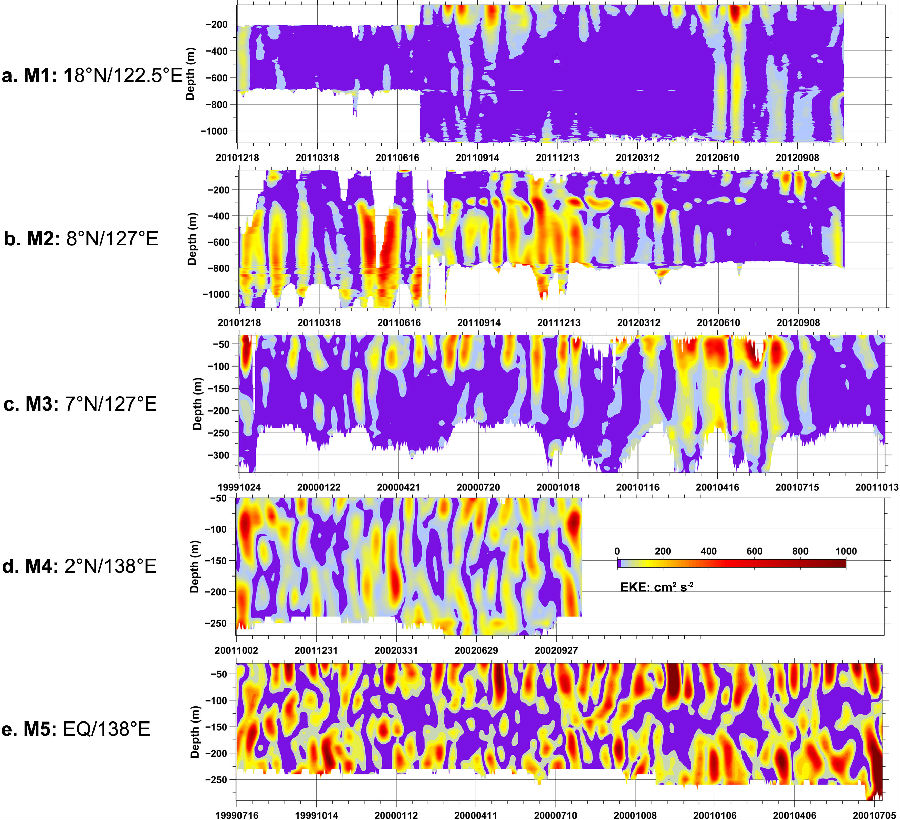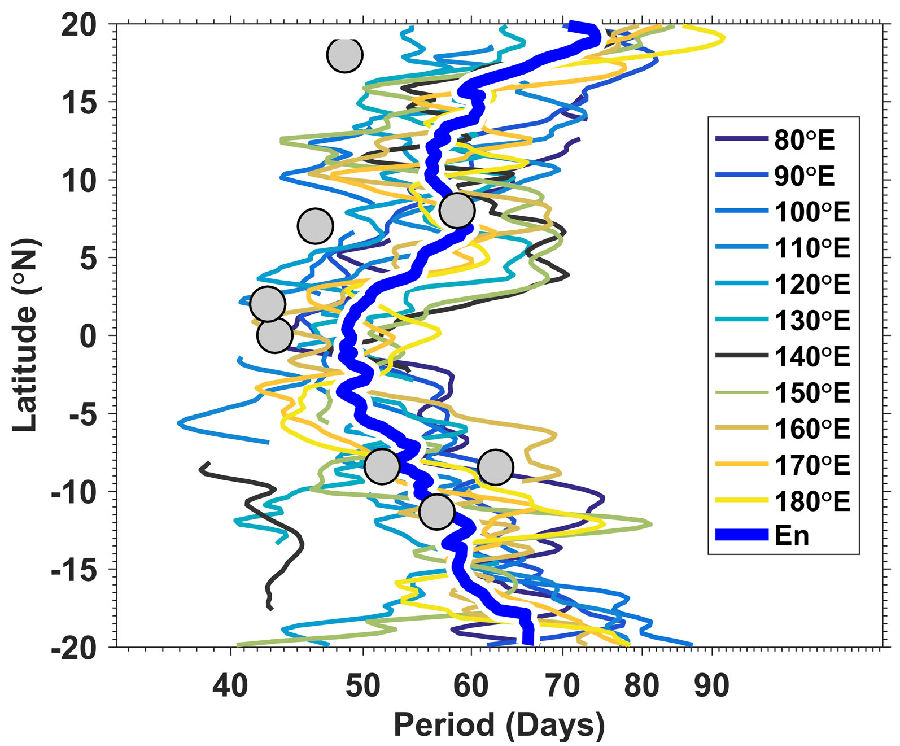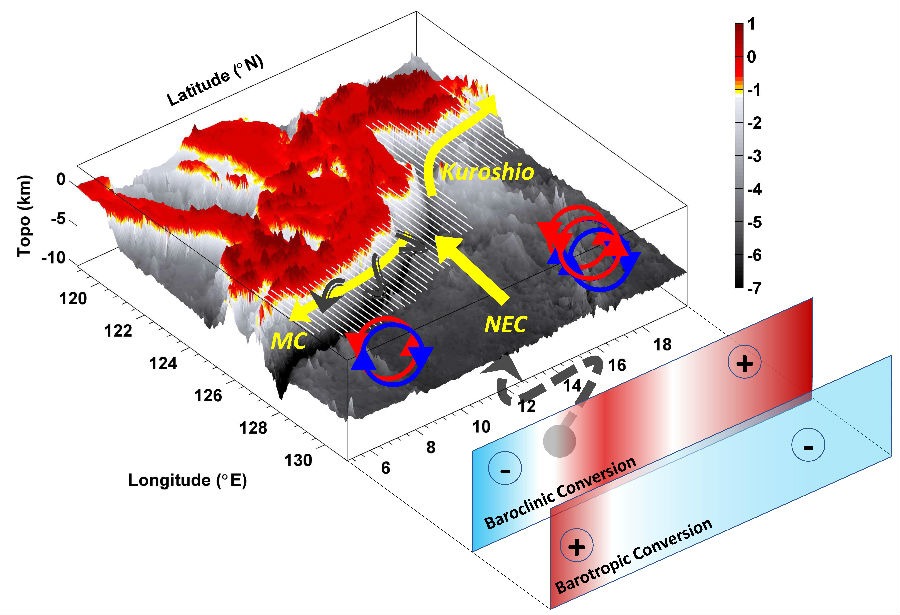Spatio-temporal Features of Intra-seasonal Oceanic Variability in the Philippine Sea from Mooring Observations and Numerical Simulations
The Philippine Sea is located within the pathway of the propagating Madden–Julian oscillation (MJO) system and is also the destination for the North Pacific mesoscale oceanic eddies and waves. As such, the Philippine Sea is characterized by striking intra-seasonal variability (20–90 days; ISV) that plays a key role in bridging weather and climate. Dr Shijian Hu and his colleagues combined mooring observations, including NPOCE moorings, and outputs from an eddy-resolving general circulation model, and investigated the spatio-temporal features and associated dynamics of intra-seasonal oceanic variability in the Philippine sea.
The amplitude of ISV determined from sea level anomaly (SLA) is found to decrease from the northern and coastal Philippine Sea to the south and interior Pacific Ocean. In contrast, eddy kinetic energy (EKE) features a northward decreasing gradient with a maximum at about 6N. The meridional distribution of SLA and EKE spectra indicates that the ISV period increases with latitude and is symmetrical about the equator. Mesoscale eddies in the upper layer are tracked to explore the statistical distribution. Westward propagating mesoscale eddies and intraseasonal Rossby waves related to dynamic instabilities are an important source of the oceanic ISV in the Philippine Sea. Clear coastal propagation of ISVs related to coastal Kelvin waves is detected the south of about 14N. Composite analysis shows that the MJO is another important forcing shaping the spatial features of Philippine ISV intensity and contributes close to half of the observed total ISV.
These results are recently published online in Journal of Geophysical Research: Oceans. This work was supported by the National Natural Science Foundation of China (Grants 41406016, 41776018, 41330963 and 41730534), the Key Research Program of Frontier Sciences, CAS (QYZDB-SSW-SYS023), and NOAA's Climate Program Office, Climate Variability and Predictability Program (Award Number NA17OAR4310257).
Citation: Hu, S., J. Sprintall, C. Guan, B. Sun, F. Wang, G. Yang, F. Jia, J. Wang, D. Hu, and F. Chai (2018), Spatio-temporal Features of Intra-seasonal Oceanic Variability in the Philippine Sea from Mooring Observations and Numerical Simulations, Journal of Geophysical Research: Oceans, 123, doi: https://doi.org/10.1029/2017JC013653.

Figure 1. Time series of EKE observed by mooring ADCPs. See text for definition of the EKE (Hu et al., 2018, JGR-Oceans).

Figure 2. Meridional distribution of mean intra-seasonal periods (days) of ISVs. Gray circles denote mooring observations averaged over the upper 300-m layer (M1-M5: EKE; M6-M8: volume transport) and colorized lines indicates SLAs at various longitudes (see inset). The heavy blue line (“En”) indicates the ensemble mean of all the SLAs (Hu et al., 2018, JGR-Oceans).

Figure 3. Schematic of the physical processes determining the coastal intra-seasonal variability in the Philippine Sea. Baroclinic and barotropic conversions provide energy for mesoscale eddies (red and blue arrows) and intraseasonal Rossby waves (grey dashed arrow lines), and further leads to intraseasonal variability in the Philippine Sea. Coastal Kelvin waves (grey dashed arrow lines along the coast) links the ISVs in the southern coastal region (Hu et al., 2018, JGR-Oceans).